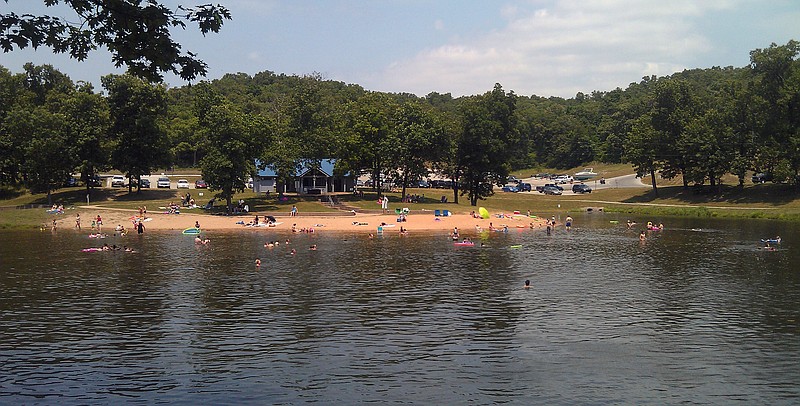When tests determine bacteria are high at a Missouri park beach, officials will post signs that recommend against swimming instead of closing the beach.
The change to advise rather than to close came partway through the swimming season after Gov. Jay Nixon signed legislation dealing with the Department of Natural Resources. The measure was signed this month and took effect immediately.
Supporters say the advisory better informs the public about water quality without unduly alarming patrons.
"The previous standard was kind of like bubble-wrapping everything in the state park," said Rep. Rocky Miller, whose district includes part of the Lake of the Ozarks. "You can do that but what actual good does that do? It cuts off access to the actual park and the ability to enjoy the park system. Whereas what this does is it informs the people and allows us to let people make their own decisions whether they want to swim or not swim based upon a high sample reading."
Miller, R-Tuscumbia, asserted the beach closure policy was the most stringent in the country and did not reflect how good water quality is.
The Missouri Department of Natural Resources takes weekly samples during the recreation season from swimming beaches at parks statewide, from Stockton northwest of Springfield to Wakonda north of Hannibal. Beaches were closed when E. coli was too high for a single sample or a rolling average. Now signs will be posted that state "Swimming is Not Recommended" based upon an average for that week at the beach. Officials say the tests provide useful information but are a small snapshot and do not reflect the overall water quality in a lake or river.
A beach still can be closed when there is a documented health risk such as a wastewater bypass, extremely high results or the spill of hazardous chemicals.
Ken Midkiff, director of the Missouri Clean Water Campaign, said a sign does not prevent people from entering the water when it puts them at risk.
"The beaches should be closed," he said.
Department of Natural Resources spokeswoman Gena Terlizzi said depending on the site, closing a beach involved posting a sign, taping or roping off the area or closing the beach access gate.
The department reported that no beach required an advisory based upon water samples taken Monday. In 2012, bacteria levels were high enough to prompt beach closures at state parks a dozen times during the spring and summer. That was less than the frequency of closures in 2011 or 2010.
Changes to beach testing come several years after controversy focused on water quality. Among the issues that arose in 2009 was a park beach at the Lake of the Ozarks that wasn't properly closed. The director of the Department of Natural Resources at the time was suspended for more than two weeks and a broader internal review was launched. It identified 10 instances over three years in which park beaches were not closed.
The state started a website to make it easier for people to see whether beaches were open or closed. The DNR has continued posting information about beach statuses.
Jim Divincen, administrator of the Tri-County Lodging Association for the three counties around the Lake of the Ozarks, said the public sometimes wrongly perceived closure of a beach to indicate the entire lake is dirty. He noted a separate testing program showed low bacteria results at the Lake of the Ozarks and that the two state park beaches account for a small portion of the shoreline.
"The new advisory system in our opinion more accurately communicates the water quality for all state park beaches while continuing to ensure that public safety is protected," Divincen said.
Online:
State park beaches: http://www.dnr.mo.gov/beaches/index.html

